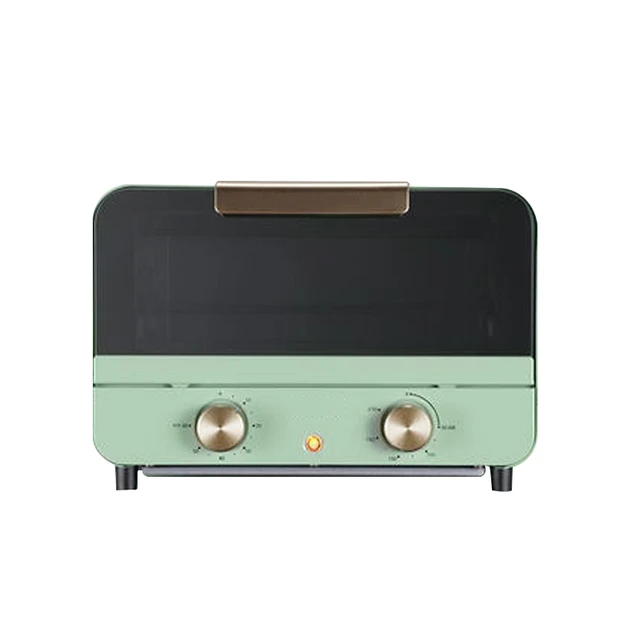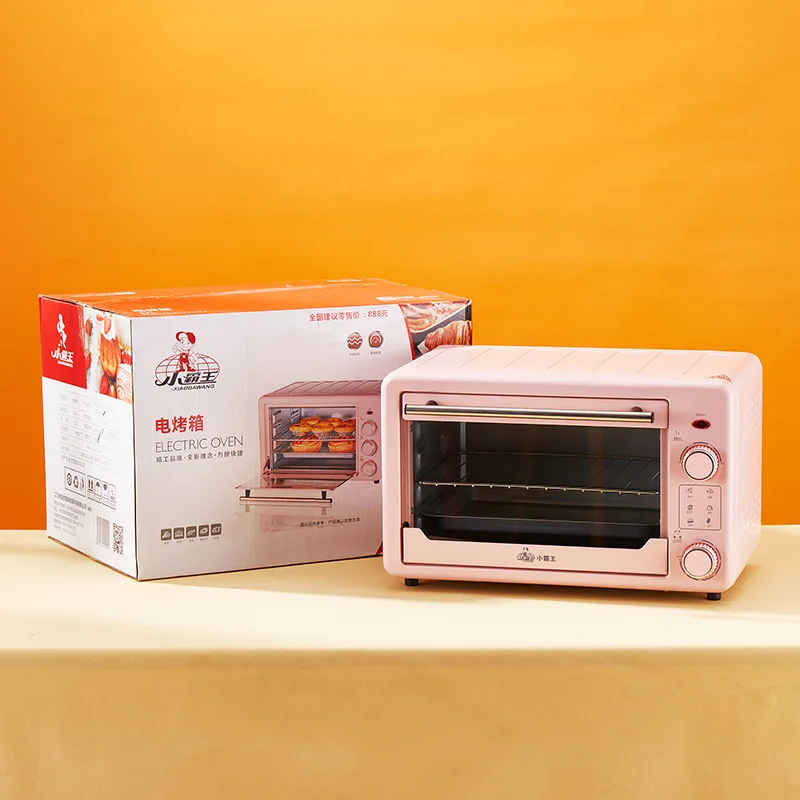Introduction:
Oven safety is a critical consideration when using this essential kitchen appliance. One common question that arises is whether ovens have built-in mechanisms to turn off when oven is too hot. While ovens are designed to reach high temperatures for cooking purposes, safety features are implemented to prevent them from overheating and causing hazards. In this article, we will discuss the safety mechanisms in place to prevent oven getting too hot, the importance of temperature control, and additional safety considerations to ensure a safe cooking environment.

The Mechanics of Heat Regulation in Ovens
Ovens are designed with various components that help regulate their temperature effectively. These components include thermostats, heating elements, and fans in convection models. The thermostat plays a crucial role in maintaining a consistent temperature. It continually monitors the internal temperature and communicates with the heating elements. If the temperature exceeds the set limit, the thermostat tries to maintain balance by cutting power to the heating elements.
The Role of the Thermostat
The thermostat is essential for an oven’s functioning. It acts like a thermostat in your home, ensuring the oven doesn’t overheat. When you set a temperature, the thermostat engages the heating elements. However, if the internal temperature climbs excessively, the thermostat sends a signal to turn off the heating. This feature helps to prevent fire hazards and damage to the appliance.
Heating Elements and Their Functionality
Heating elements contribute significantly to an oven’s temperature control. These elements can be electric coils or gas flames, depending on your oven type. Each heating element receives instructions from the thermostat. This ensures that they heat only as much as necessary. Should the elements become too hot, they have built-in safety features. These features can enable them to shut down automatically if excessively hot. Thus, the design acts as a safeguard.
Do ovens turn off automatically when oven too hot?
Temperature Regulation in Ovens:
a. Thermostat Control: Ovens are equipped with thermostats, which are temperature-sensing devices that regulate and maintain the desired cooking temperature. The thermostat constantly monitors the temperature inside the oven and signals the heating elements to cycle on or off to maintain the set temperature.
b. Temperature Sensors: Ovens may also feature temperature sensors that provide feedback to the thermostat, allowing for accurate temperature control. These sensors help prevent the oven from excessively heating and ensure consistent cooking results.
c. Temperature Limits: Ovens are designed with temperature limits in mind to ensure safe operation. The maximum temperature that an oven can reach is predetermined during the manufacturing process to prevent overheating and potential hazards.
Thermal Cutoffs and Safety Features:
a. Thermal Fuse or Cutoff: Some ovens are equipped with a thermal fuse or cutoff as a safety mechanism. This device is designed to disconnect the power supply to the oven if it detects excessive heat. The thermal fuse interrupts the electrical circuit, preventing the oven from further heating.
b. Overheat Protection: In addition to thermal fuses, many ovens incorporate overheat protection features. These features automatically shut off the oven if the internal temperature exceeds a certain threshold, protecting against potential damage or fire hazards.
c. Resettable Thermostats: Certain ovens may have resettable thermostats or limit switches that trip and shut off the oven when a predetermined temperature is exceeded. These switches can be manually reset once the oven has cooled down to a safe temperature.
Preventing Oven Overheating:
a. Proper Ventilation: Adequate ventilation in the kitchen is essential to prevent oven overheating. Ensure that the oven’s ventilation openings are not blocked and that there is sufficient space around the oven for heat dissipation.
b. Oven Placement: Proper placement of the oven is crucial to prevent overheating. Avoid installing the oven in enclosed spaces or close to heat-sensitive materials that can impede proper ventilation and lead to excessive heat buildup.
c. Regular Maintenance: Perform regular maintenance tasks such as cleaning the oven, removing grease or food debris, and ensuring proper functioning of ventilation systems. Proper maintenance helps prevent overheating caused by blocked airflow or compromised heat transfer.
d. Avoiding Oven Overload: Do not overload the oven with excessive cookware or baking trays, as this can obstruct proper airflow and lead to uneven heat distribution or overheating.
The Importance of Regular Maintenance
Ensuring your oven functions properly requires regular maintenance. Neglecting upkeep can lead to safety hazards, including overheating. Regular checks help you catch problems before they escalate into bigger issues. So, what should you specifically look out for? Understanding maintenance tasks can help prolong your oven’s lifespan.
Cleaning and Inspection
Cleaning your oven regularly is essential. Built-up grease and food residues can severely affect its performance. If residues accumulate, they can obstruct airflow or even ignite when heated. Consequently, this may lead to dangerous situations. A simple wipe down can do wonders. Additionally, regular inspections can reveal issues such as worn-out heating elements.
Professional Servicing
Consider professional servicing for a more thorough evaluation. Professionals can offer insights into any lingering issues not visible to the casual observer. They can check the thermostat, heating elements, and wiring for any malfunction. Opting for this service can ensure that your oven remains safe and efficient. After all, it is better to be proactive than reactive when it comes to appliance safety.
User Monitoring and Safety Considerations:
a. Responsible Oven Use: It is important for users to monitor the oven during operation and practice responsible use. This includes following recommended cooking times and temperature settings, avoiding leaving the oven unattended for extended periods, and being mindful of potential overheating risks.
b. Temperature Monitoring: Utilize built-in oven thermometers or use separate oven thermometers to verify and monitor the internal temperature. This helps ensure accurate temperature control and prevents overheating.
c. Oven Door Usage: Avoid leaving the oven door open unnecessarily during cooking. Frequent door opening can lead to heat loss and potentially disrupt the oven’s temperature regulation, causing it to work harder and potentially overheat.
d. Oven Mitts: Always use oven mitts or heat-resistant gloves when handling hot cookware or touching oven surfaces. This prevents burns and injuries.
e. Child Safety: If there are children in the household, consider installing child safety locks on the oven to prevent accidental operation or access. This helps minimize the risk of injury or overheating caused by unauthorized use.
Additional Safety Measures:
a. Smoke and Fire Detectors: Install smoke detectors and fire alarms in the kitchen and near the oven as an added safety measure. These devices alert occupants to potential hazards, such as smoke or fire, allowing for swift action to prevent further damage.
b. Fire Extinguisher: Keep a fire extinguisher readily accessible in the kitchen. Familiarize yourself with its operation and ensure it is within reach in case of an oven-related fire or other emergencies.
c. Emergency Procedures: Establish emergency procedures and ensure all occupants of the household are aware of them. This includes knowing how to safely turn off the oven, disconnect power, and evacuate in the event of an oven-related emergency.
d. Regular Inspections: Periodically inspect the oven for signs of damage, malfunctioning buttons or knobs, frayed power cords, or any other issues that may compromise safety. Address any concerns promptly and consult a professional technician if needed.
Signs Your Oven Might Be Overheating
Recognizing the signs of an overheating oven can empower you. With quick action, you can minimize risks and prevent damage to your appliance. Additionally, knowing the signs can offer peace of mind while cooking. Therefore, familiarizing yourself with these indicators will only be beneficial.
Unusual Smells
One of the most noticeable signs is unusual odors. If you smell something burning, it may indicate that your oven is overheating. This smell can stem from food, grease, or even components melting. Pay attention to these smells. They can serve as important signals for you to investigate further.
Irregular Cooking Results
Another sign is inconsistent cooking performance. If your food consistently burns on the outside but remains raw inside, your oven may be too hot. Understanding these signs can help you troubleshoot issues earlier on. Be proactive in your checks, especially if you notice such patterns in cooking.
Professional Assistance:
a. Manufacturer Support: If you encounter persistent issues or have concerns regarding oven safety, contact the oven manufacturer’s customer support. They can provide guidance, troubleshooting tips, or arrange for professional assistance if needed.
b. Professional Maintenance: Consider scheduling periodic professional maintenance checks for your oven. This can help identify and address potential issues before they escalate and ensure the oven’s continued safe operation.
Conclusion:
Ovens incorporate several safety mechanisms to prevent them from overheating and causing potential hazards. Thermostats, temperature sensors, thermal fuses, and overheat protection features are designed to regulate oven temperature and shut off the oven if excessive heat is detected. Proper oven placement, ventilation, regular maintenance, and responsible user practices also play a vital role in preventing oven overheating. Additionally, implementing additional safety measures such as smoke detectors, fire extinguishers, and emergency procedures further enhance kitchen safety. By understanding oven safety features, practicing responsible oven use, and following recommended safety guidelines, users can confidently and safely utilize ovens for their cooking needs.

